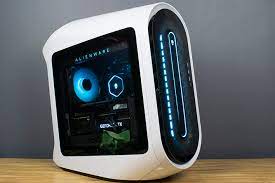What Is a Remote Terminal Unit & Why Should I Have One?

A remote terminal unit, or RTU, is a multipurpose device that monitors and controls remote equipment. It’s vital equipment for industries that rely on remotely-located assets, such as oil and gas, water and wastewater, electric power, and more. An RTU usually consists of a microprocessor, input/output (I/O) interface, and communication ports. It’s designed to be installed in harsh environments and can operate in extreme conditions. In this blog post, we will explore the features and benefits of RTUs and some of the industries that rely on them. If you’re looking for a way to improve the efficiency of your operations, an RTU may be the perfect solution.
What is a remote terminal unit?
A remote terminal unit (RTU) is a multipurpose device used to monitor and control remote equipment. RTUs are typically used in SCADA (supervisory control and data acquisition) systems but can also be used in other industrial applications.
An RTU typically consists of microprocessors, input/output (I/O) modules, and communication ports. The microprocessor controls the I/O modules and communication ports. The I/O modules are used to interface with the remote equipment. The communication ports connect the RTU to the SCADA system or other network devices.
The main advantage of using an RTU is that it allows for remote monitoring and control of equipment. This can save time and money by reducing or eliminating the need for on-site personnel. Additionally, RTUs can provide real-time data that can be used to make decisions about process changes or equipment maintenance.
What are the benefits of having a remote terminal unit?
A remote terminal unit (RTU) is a multipurpose device used to monitor and control remote equipment. An RTU can be used to control various equipment, including pumps, compressors, valves, and other types of industrial machinery.
An RTU can be a valuable asset for any business or organization that relies on remotely-operated equipment.
Here are some of the critical benefits of having an RTU:
Improved Equipment Monitoring: An RTU can be equipped with various sensors and input/output modules that allow it to monitor the status of remote equipment in real-time. This information can then be relayed back to a central control panel, giving operators a better understanding of the condition of their equipment.
Reduced Maintenance Costs: By monitoring the status of remote equipment, an RTU can help to identify potential problems before they occur. This can help to reduce the need for expensive repairs and downtime associated with faulty equipment.
Greater Operational Efficiency: An RTU can help optimize the operation of remotely-controlled equipment by automatically making adjustments based on changes in conditions. For example, an RTU could increase the flow rate of a pump if it detects that the system pressure has increased.
Enhanced Safety: In some cases, an RTU can be equipped with safety features that help to prevent accidents and injuries. For example, an RTU could shut down a piece of machinery if it detects unsafe operating.
How do I choose the suitable remote terminal unit for my needs?
The first step is to understand what your needs are. What do you need the RTU to do? What sensors or devices need to be monitored or controlled? What kind of environment will it be operating in? Once you understand your needs well, you can start looking at different RTUs on the market and compare them.
There are a few key things to look for when choosing an RTU:
Ease of use: The RTU should be easy to set up and configure. It should also be easy to use and understand.
Reliability: The RTU should be built with quality components and be designed for reliability. It should also come with a good warranty.
Flexibility: The RTU should be able to grow with your needs. It should be expandable and support various types of input/output devices.
Support: The manufacturer should provide reasonable technical support if you have any RTU problems.
What are the different types of remote terminal units?
There are two main types of remote terminal units: proprietary and open. Proprietary remote terminal units are made by a specific company to be used with their equipment. On the other hand, available remote terminal units can be used with any equipment and software.
Proprietary remote terminal units have their advantages and disadvantages. One advantage is that they are often cheaper than open units. Another advantage is that they usually come with better support from the manufacturer. The main disadvantage of proprietary units is that they can be challenging to integrate with other types of equipment.
Open remote terminal units are more expensive than proprietary ones but offer more flexibility. They can be used with any equipment and software, making them ideal for companies that use various brands of equipment.
How do I install a remote terminal unit?
Installing a remote terminal unit (RTU) is a relatively simple process that can be completed in just a few steps:
Determine where the RTU will be installed and mount it to the wall or another suitable surface.
Connect the RTU to the power supply and turn it on.
Use the provided software to configure the RTU according to your needs.
Conclusion
A remote terminal unit (RTU) is a multipurpose device that can be used to monitor and control various electronic devices and systems. RTUs are often used in industrial and commercial settings but can also be used in home automation systems. While RTUs can be very beneficial, they are not essential for every scenario. Considering an RTU, weigh the pros and cons to decide if it suits your needs.





